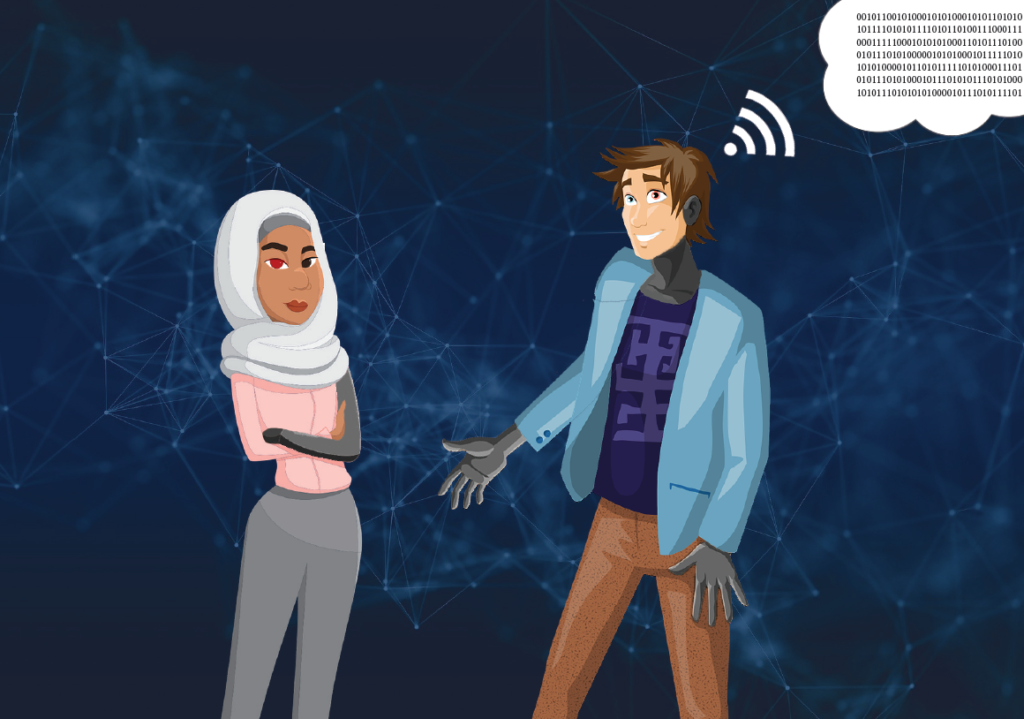
„ We’re going to gradually merge and enhance ourselves. In my view, that’s the nature of being human — we transcend our limitations.”
Raymond Kurzweil (Engineering Director at Google, developer and futurist)
Imagine, that the only thing you can see is a black screen and that’s all you ever see in your entire life. So, wouldn’t it be great to be able to see color again and real images. There are technologies now, that can enable you to do that. These technologies are referred to as Human Augmentation.
Definition
Human Augmentation is not only used for innovative future technologies like exoskeletons, but is used for a lot of things, that are already included in our everyday life. It can be broken down into three categories. Firstly, the mechanic enhancement, which includes artificial limps, hearing aids and pacemakers. Then there are drugs, to enhance performance and the last category is genmanipulation, which ranges from preimplantation genetic diagnosis up to biogenetics.
But to fully understand what human augmentation is let’s first have a look at the definition. Human augmentation described innovative technology that can change human abilities. Cognitive abilities as well as sensory abilities are restored, enabled or enhanced. Human limitations are being broken and overcome by natural and artificial methods. In general, the method human augmentation can be separated into three forms: Replicating, Supplementing and Extending. The center are the human interactions and how they can be influenced by technology.
Human Enhancement
Another important term when talking about Human augmentation is Human enhancement. The term Human enhancement is used to describe medical inventions that are not intended to treat diseases but to improve healthy characteristics. Current technical applications are for example aesthetic interventions, such as breast implants & Botox, performance-enhancing pharmaceuticals, which improve mental abilities (such as concentration and memory) or implants (such as magnets), which are supposed to provide new sensory impressions.
Ethical view
The consequences of an intervention in a system as complex as the human organism cannot yet be fully understood. Side effects and unforeseeable long-term consequences cannot be ruled out, both on the health and on the social level. Human enhancement can be regarded as a luxury good, which in the future will only be available to the rich and privileged people. The already existing social division could be widened further. On the plus side, biotechnologies can be used to improve the skills of those who have been disadvantaged by nature, but who do not require medical treatment.
Are we all gonna be cyborgs?
Human augmentation already exists in our everyday lives – more than we suspect. We are familiar with prostheses, hearing aids and Google glasses. Human augmentation, however, covers a much wider area, which is already being researched in part, but in many aspects is still thought of as sci-fi fantasy. However, if you take a closer look at human augmentation, you will learn that things are already developed such as an exoskeleton, which gives the carrier extra strength through an ‘additional mechanical skeleton’.
In addition to these possibilities for human augmentation and enhancement, there is a general trend towards more technology in our lives. Technology not only supports us; it grows nearer and becomes a part of us. The line between people and technology gets blurry. Functions that used to be possible only on a stationary PC have now been transferred to the portable laptop. After that came the smartphone, which we carry with us all the time. Next will be the data glasses, which are already moving directly in front of our eyes. So, is the next logical step the implant?
People like Raymond Kurzweil see huge changes coming our way over the next 25 years. He says: “In 10 years, technology will be 10,000 times more powerful than it is now.“
And those changes are going to have a huge impact on our lives. He says the fusion of man and machine is the next stage of evolution. According to Kurzweil, in the foreseeable future we will be connected to the cloud via a chip implanted in our brain and will have constant access to all knowledge. Brain and computer will form one unit, the technology within us will become part of ourselves – an advanced species.
According to Kurzweil, in 2045 we will overcome our human-biological limits. Radical possibilities are conceivable, such as abandoning the unity of body and mind, living in completely digital worlds, with a digitalized personality and the backup of one’s own self.
At this point, of course, one would be long past augmentation. But what today still sounds like science fiction doesn’t seem entirely unfounded, and in 40 years we may enjoy our immortality to the full with our digitalized personalities…
Article by:
Amelie Böttcher, Eric Barth, Saskia Irblich and Tabea Wiesner

